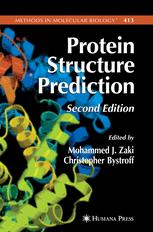

Most ebook files are in PDF format, so you can easily read them using various software such as Foxit Reader or directly on the Google Chrome browser.
Some ebook files are released by publishers in other formats such as .awz, .mobi, .epub, .fb2, etc. You may need to install specific software to read these formats on mobile/PC, such as Calibre.
Please read the tutorial at this link: https://ebookbell.com/faq
We offer FREE conversion to the popular formats you request; however, this may take some time. Therefore, right after payment, please email us, and we will try to provide the service as quickly as possible.
For some exceptional file formats or broken links (if any), please refrain from opening any disputes. Instead, email us first, and we will try to assist within a maximum of 6 hours.
EbookBell Team

4.4
102 reviewsFor forty years we have known the essential ingredients for protein folding – an amino acid sequence, and water. But the problem of predicting the three-dimensional structure from its sequence has eluded computational biologists even in the age of supercomputers and high throughput structural genomics. Despite the unsolved mystery of how a protein folds, advances are being made in predicting the interactions of proteins with other molecules, such as small ligands, nucleic acids or other proteins. Protein Structure Prediction focuses on the various computational methods for prediction, their successes and their limitations, from the perspective of their most well-known practitioners. Leaders in the field provide insights into template-based methods of prediction, structure alignment and indexing, protein features prediction, and methods for de novo structure prediction. Protein Structure Prediction is a cutting-edge text that all researchers in the field should have in their libraries.